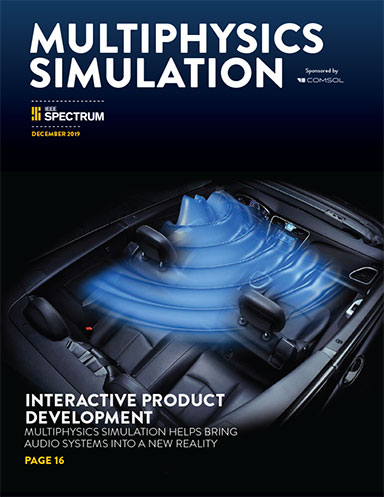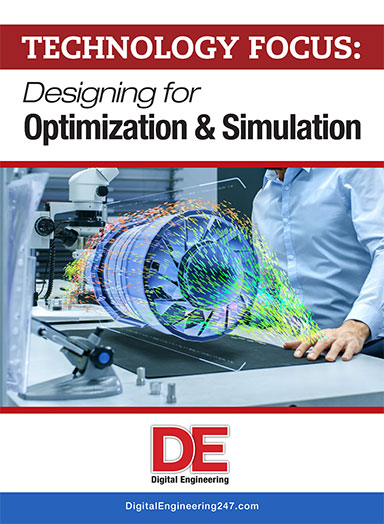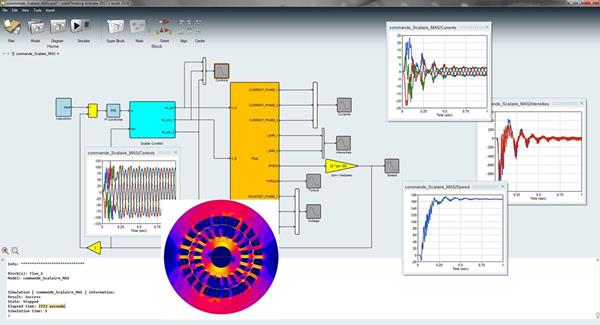Flux 12.3 Connects with Altair Tools to Support Multi-Disciplinary Optimization for Design in Electrical Engineering
Electromagnetic Simulation News
Electromagnetic Simulation Resources


Latest News
May 10, 2017
The latest version of Flux software for low frequency electromagnetic and thermal simulation, which is now a part of the Altair HyperWorks simulation platform, has been released. Flux 12.3 is well-suited to the analysis, design and optimization of modern applications such as electric rotating machines, actuators and sensors, high power electrical equipment, heat treatment or electromagnetic compatibility. Flux 12.3 includes several new enhancements, enabling users to achieve even higher quality meshes and experience new and efficient ways to deal with 3D CAD imports, according to Altair.
 Flux 12.3 offers co-simulation with solidThinking Activate system simulator. Image courtesy of Altair Engineering Inc.
Flux 12.3 offers co-simulation with solidThinking Activate system simulator. Image courtesy of Altair Engineering Inc.Flux 12.3 features:
- Co-simulation with solidThinking Activate, Altair’s solution for model-based development system simulation, available for 2D, 3D and Skew Flux models. Flux embeds its own electric circuit editor, but when it requires more advanced analysis this co-simulation can be employed. The coupling considers various phenomenon such as saturation, eddy currents, motion, control loops, system interaction, etc.
- More precise evaluation of the heat transfer, through a new coupling with the Altair AcuSolve computational fluid dynamics (CFD) solver included in the HyperWorks suite.
- New coupling with OptiStruct, Altair’s structural linear and nonlinear solver, which allows the calculation of vibrations generated by electromagnetic forces in electric machines to reduce their noise.
- New robust and fast 3D mesh generation tools, including a new volume tetrahedral generator and high quality meshing technology able to deal with complex geometries.
- A 3D induction machine tool setting, ensuring electric machine simulation in 3D, can be generated quickly and easily using the model templates, according to the company.
- Optimization of electric systems to help minimize the losses in a device or system, which can improve the response times, increase the torque and reduce dimensions and weight. For complex cases, the Altair HyperStudy optimization solution can reduce the computing time.
- A post-processing function has been developed to help predict dielectric breakdown voltages with better accuracy, allowing for reduction of the usual oversizing in such devices.
“Flux now benefits from the latest technologies available in Altair, ensuring added value for our users,” said Vincent Leconte, director Business Development EM Solutions, Altair. “We have integrated new CAD import and meshing capabilities and speeded-up 3D model creation. Offering new connections with the other Altair simulation tools allows users to couple different physics and propose a complete simulation solution. With Flux 12.3 we have opened the door to multi-disciplinary optimization for design in electrical engineering.”
The addition of Flux technology to the Altair HyperWorks suite of products in 2016 further enhanced Altair’s electromagnetic simulation offering by addressing the lower frequency simulation requirements of customers.
For more information, visit Altair.
Sources: Press materials received from the company.
Subscribe to our FREE magazine, FREE email newsletters or both!
Latest News




